External links
Related Research Articles
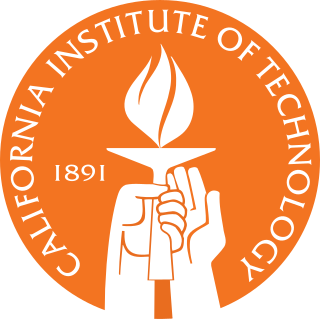
The California Institute of Technology (Caltech) is a private research university in Pasadena, California, United States of America. The university is known for its strength in science and engineering, and is among a small group of institutes of technology in the United States which is primarily devoted to the instruction of pure and applied sciences. Caltech is ranked among the best academic institutions in the world and is among the most selective in the U.S.

The Massachusetts Institute of Technology (MIT) is a private land-grant research university in Cambridge, Massachusetts. Established in 1861, MIT has since played a key role in the development of modern technology and science, ranking it among the top academic institutions in the world.
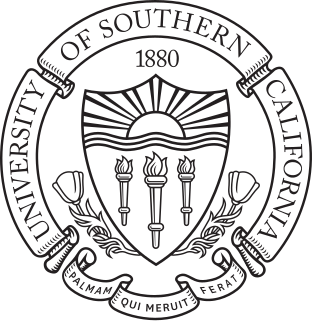
The University of Southern California is a private research university in Los Angeles, California. Founded in 1880 by Robert M. Widney, it is the oldest private research university in California.

Claremont is a suburban city on the eastern edge of Los Angeles County, California, United States, 30 miles (48 km) east of downtown Los Angeles. It is in the Pomona Valley, at the foothills of the San Gabriel Mountains. As of the 2010 census it had a population of 34,926, and in 2019 the estimated population was 36,266.

The Claremont Colleges are a consortium of seven private institutions of higher education located in Claremont, California, United States. They comprise five undergraduate colleges —Pomona College, Scripps College, Claremont McKenna College (CMC), Harvey Mudd College, and Pitzer College—and two graduate schools—Claremont Graduate University (CGU) and Keck Graduate Institute (KGI). All of the members except KGI have adjoining campuses that together cover roughly 1 square mile (2.6 km2).

Pomona College is a private liberal arts college in Claremont, California. It was established in 1887 by a group of Congregationalists who wanted to recreate a "college of the New England type" in Southern California, and in 1925 it became the founding member of the Claremont Colleges consortium of adjacent, affiliated institutions.
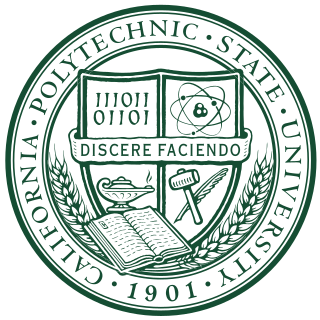
California Polytechnic State University, San Luis Obispo is a public university in San Luis Obispo, California. It is one of three polytechnics in the California State University system.

Scripps College is a private liberal arts women's college in Claremont, California. It was founded as a member of the Claremont Colleges in 1926, a year after the consortium's formation. Journalist and philanthropist Ellen Browning Scripps provided its initial endowment.

Pitzer College is a private liberal arts college in Claremont, California. One of the Claremont Colleges, the college has a curricular emphasis on the social sciences, behavioral sciences, international programs, and media studies. Pitzer is known for its social justice culture, nonconformist student body, and experimental pedagogical approach.

California State Polytechnic University, Pomona is a public polytechnic university in Pomona, California. It is one of three polytechnic universities in the California State University system.

Claremont McKenna College (CMC) is a private liberal arts college in Claremont, California. It has a curricular emphasis on government, economics, public affairs, finance, and international relations. CMC is a member of the Claremont Colleges consortium.

Beloit College is a private liberal arts college in Beloit, Wisconsin. Founded in 1846, when Wisconsin was still a territory, it is the state's oldest continuously operated college. It is a member of the Associated Colleges of the Midwest and has an enrollment of roughly 1,400 undergraduate students.

The Claremont Graduate University (CGU) is a private, all-graduate research university in Claremont, California. Founded in 1925, CGU is a member of the Claremont Colleges which includes five undergraduate and two graduate institutions of higher education.

The W. M. Keck Foundation is an American charitable foundation supporting scientific, engineering, and medical research in the United States. It was founded in 1954 by William Myron Keck, founder and president of Superior Oil Company. The Foundation's trust fund currently has assets in excess of $1 billion.
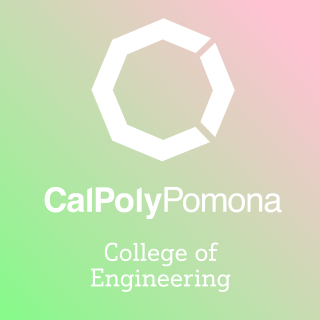
The Cal Poly Pomona College of Engineering is the engineering college at California State Polytechnic University, Pomona located in Pomona, California, United States. Known for its "learn by doing" philosophy, the college's motto is: "Learn by Doing: Making Imagination Real". Cal Poly has one of the "most recognized engineering programs in the country" and, with nearly 6,000 students, it is also the largest engineering college in Southern California, the second largest college of engineering in the California State University system, and the seventeenth largest engineering college in the United States. In the 2020 U.S. News & World Report's "America's Best Colleges" edition, the College of Engineering is ranked 11th out of 210 public and private undergraduate engineering schools in the U.S. where doctorates are not offered.
The Cal Poly Pomona College of Environmental Design (CENV) is a college part of the California State Polytechnic University, Pomona. The college houses over 1,600 students; making it one of largest environmental design programs in the United States. The college offers bachelor's degrees in five departments, as well as three master's degree programs. It offers a Master of Interior Architecture, professional degree in collaboration with the University of California, Los Angeles (UCLA).

The California State Polytechnic University, Pomona is organized into seven academic colleges, one extension college, and one professional school. These units provide 65 majors, 20 master's degree programs and 13 teaching credentials/certificates.
The Collins College of Hospitality Management is a college part of the California State Polytechnic University, Pomona. Founded in 1973, it was the first hospitality management studies program in California and its thousand students make it the largest such school in the state. As of 2010, The Collins College of Hospitality Management is ranked third in the nation by restaurant executives. Andrew Hale Feinstein is Dean and James A. Collins Distinguished Chair. With approximately 1,400 undergraduate students, the college is the largest of its kind in the country.
College and university rankings in the United States are rankings of U.S. colleges and universities based on factors that vary depending on the ranking. Rankings are typically conducted by magazines, newspapers, websites, or academics. The most popular and influential set of rankings is published by U.S. News & World Report. In addition to ranking entire institutions, specific programs, departments, and schools can be ranked. Some rankings consider measures of wealth, research excellence, selectivity, and alumni success. There is much debate about rankings' interpretation, accuracy, and usefulness.
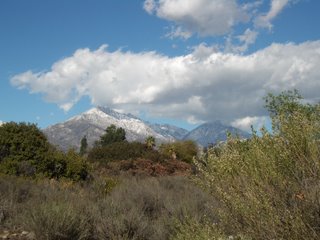
The 85 acre Robert J. Bernard Biological Field Station (BFS) is located on the north side of Foothill Boulevard between College Avenue and Mills Avenue in Claremont, California. The BFS provides facilities and ecological communities for high-quality teaching and research in biological, environmental, and other sciences to the students, faculty, and staff of the Claremont Colleges. It may also be used by members of other academic institutions and by public groups for educational purposes. The BFS is a member of the Organization of Biological Field Stations (OBFS). It was named after Claremont Colleges president Robert J. Bernard.
References
- ↑ "About the Consortium".
- ↑ "Keck Geology Consortium Projects: 2009-2010 | Keck Geology Consortium". keckgeology.org. Archived from the original on 2009-01-07.
- ↑ "Keck Geology Consortium Projects: 2008/2009 | Keck Geology Consortium". keckgeology.org. Archived from the original on 2008-03-11.
- ↑ "2007/2008 Projects | Keck Geology Consortium". keckgeology.org. Archived from the original on 2008-03-11.
- ↑ "Keck Geology Consortium Project Directors Handbook" (PDF). Keck Geology Consortium. Retrieved 22 August 2021.
- ↑ "Member Schools | Keck Geology Consortium". keckgeology.org. Archived from the original on 2008-03-11.
- ↑ "The History of Keck Geology Consortium".